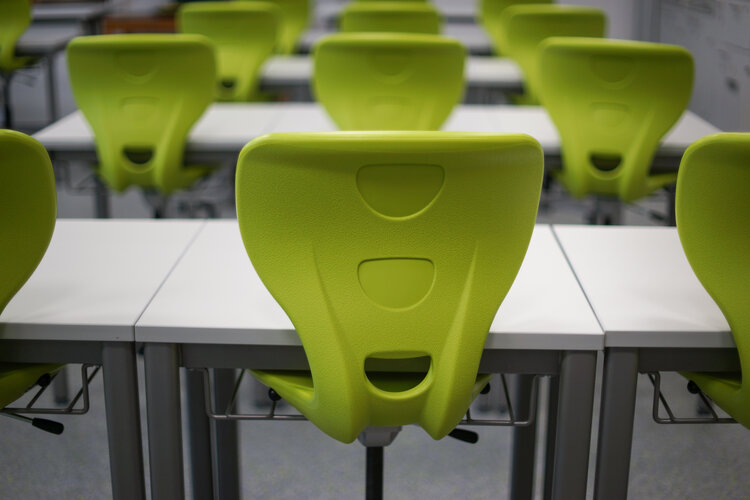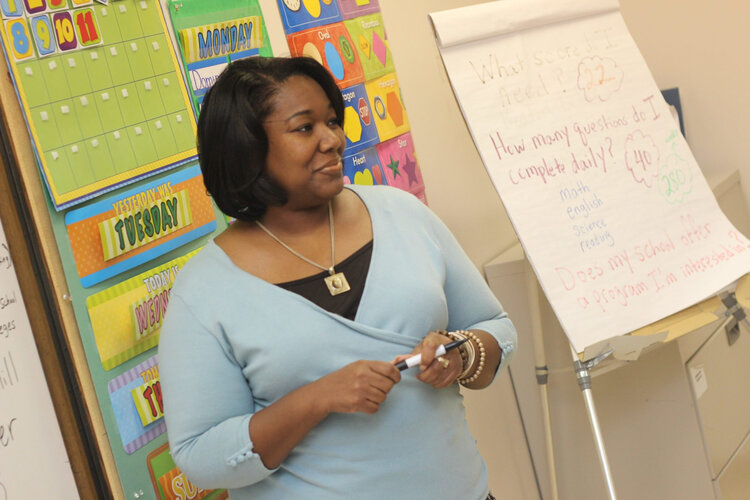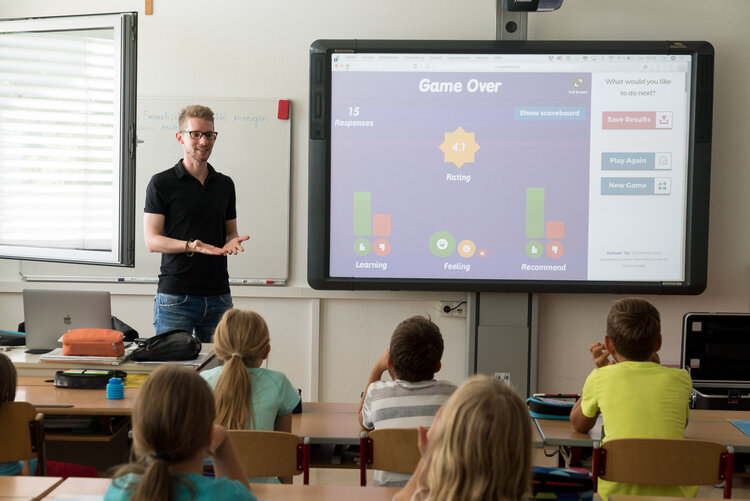Growth mindset is one of the hottest buzzwords in education, but what does it really mean? And is it more than just hype? First, take this quiz to see what you already know about growth mindset.
Growth mindset is:
- A key part of a theory pioneered by Carol Dweck
- The belief that your intelligence and skills can be developed
- A mindset that teachers might try to instill in their students
- One factor that might impact resilience
- All of the above
If you said, “all of the above,” you are correct!
Stanford psychology professor Carol Dweck is famous for developing the theory of growth mindset versus fixed mindset in her 2006 book Mindset: The New Psychology of Success. In her own words, her research explores the question, “What are the consequences of thinking that your intelligence or personality is something you can develop, as opposed to something that is a fixed, deep-seated trait?” Put another way, why do some students make a comeback after failure while other students are discouraged by even minor obstacles?
Carol Dweck’s work began with an early study that divided middle school students into two groups. Both groups were praised for their high score on a test, but one group was told that their intelligence had led to the high score whereas the other group was praised for their effort in achieving the high score. The results of that study: the effort praise group put more work into future tasks while the intelligence praise group actually performed worse on future tasks.
Although Dweck is a psychologist, it is little wonder that her ideas took off in the realm of education. A 2016 survey of educators across the country found that 98% of teachers “feel that growth mindset approaches should be adopted in schools” but only 50% “said that they knew strategies to effectively change a pupil’s mindset.”
By the end of this article, you will be part of the 50% that knows tried-and-true strategies to encourage your students to adopt a growth mindset. You will also understand myths and common misconceptions about growth mindset and know how to cultivate a growth mindset in yourself!

What Growth Mindset Can Do
One of the most convincing arguments for growth mindset is that teachers see the benefits in their classrooms every day. According to a 2016 survey by Education Week, “more than 90 percent [of teachers] believe growth mindset is associated with excitement about learning, persistence, high levels of effort, and participation in class.”
What teachers see in the classroom has also been substantiated by a number of research studies conducted in the past few years. One 2018 study published in Child Development measured cortisol levels, a marker of stress, in students whose grades declined in the first few months of high school. The researchers found that “students who reported an entity theory of intelligence (i.e., the belief that intelligence is fixed) showed higher cortisol when grades were declining” than students who had more flexible theories of intelligence.
In addition, in an ongoing series of experiments conducted at Stanford, “neuroscientists have found more efficient brain activity during math thinking in students with a positive mindset about math” even after controlling for “differences in IQ, age, working memory, reading ability, and math anxiety.” The researchers leading the study wanted to look at math thinking specifically because “math is a subject often associated with a fixed mindset.”
Dr. Immordino-Yang, a neuroscientist at USC, has an explanation for the results: “the cognitive habits often associated with a fixed mindset—like focusing on grades or considering errors a threat to your identity—can make the brain react emotionally to the wrong things during learning.”
The benefits of growth mindset are more than just cognitive; there are also direct benefits on academic performance. One study done in Chile found that “students with a growth mindset were 4.9x more likely to score in the top achievement quintile (34%) than the bottom quintile (7%).” On the other hand, “students with a fixed mindset were 2.3x more likely to score in the bottom achievement quintile (28%) than the top quintile (12%).”
In fact, even a 1-hour online intervention on growth mindset can make an impact on student grades. A study recently published in Nature found that after an intervention introduced 12,000 high school freshmen to the idea that “the brain is like a muscle that grows stronger and smarter when it undergoes rigorous learning experiences,” grades went up, as did enrollment in advanced math courses. From these findings, the researchers believe that growth mindset interventions could “prevent as many as 5.3% of 1.5 million students from being labeled ‘off track’ for graduation each year.”
If growth mindset can lower cortisol, make brain activity more efficient, improve grades, and help students graduate on time, is there anything growth mindset CAN’T do?

Myths about Growth Mindset
Like many hot topics in education, growth mindset has its fair share of critics. Surprisingly, one of them is Carol Dweck herself.
Dweck stands by the importance and validity of growth mindset as a concept, but she has published several articles expressing worry that growth mindset is sometimes taken too far—or taken in the wrong direction entirely. It’s important to take her (and other critics’) concerns into account before deciding how to implement growth mindset in your classroom.
Here are the 4 biggest myths about growth mindset:
Myth 1: Growth mindset is a panacea for your educational problems.
Reality: As even Dweck herself admits, “growth mindsets are not a magic trick that will solve every challenge in the classroom.” Putting too much pressure on growth mindset or viewing it as a cure-all is setting yourself up for disappointment. Growth mindset should just be one of many learning tools that you employ with your students every day.
Myth 2: Everyone has either a fixed mindset or a growth mindset.
Reality: Carol Dweck emphasizes, “there’s a misconception that every student and teacher can be put into one of two categories: those with growth mindsets and those with fixed mindsets… but in reality, everyone ‘has a bit of both.’” For example, a student might have more of a growth mindset about history than math. Students fall on different places on the fixed-growth mindset spectrum and have varied mindsets about different subjects because of family beliefs, stereotypes, and past educational experiences.
Myth 3: If a student has a fixed mindset right now, they won’t succeed.
Reality: Labelling students with “fixed mindset” can become an explanation (or excuse) for why a student doesn’t do well. If we begin saying things like “that child can’t learn; he has a fixed mindset… it’s our way of saying ‘it’s not my fault that child isn’t learning.’”
This approach is no better than saying that a child isn’t learning because they aren’t intelligent, which is the very attitude that growth mindset resists. Education researcher John Hattie reminds, “We do not have a crystal ball, and we shouldn’t treat students who struggle like they will struggle for the rest of their lives. It’s like a self-fulfilling prophecy.”
Myth 4: Using the words “growth mindset” in your classroom means that you are exhibiting and teaching growth mindset.
Reality: It is very possible to use the term growth mindset while exhibiting a fixed mindset. For example, if you talk about how the brain is an organ that grows stronger with practice but also react to student mistakes with anxiety and disapproval, you are still showing students a fixed mindset.
John Hattie attributes growth mindset’s relatively small effect size of 0.9 to this discrepancy between philosophy and practice. Hattie says, “adults have a fixed mindset and keep treating students accordingly, so right now the effect size is low, and will continue to stay low unless we change our practices in the classroom.”
If that’s the case, how CAN we change our practices in the classroom? How can we genuinely nurture growth mindsets in our students instead of just paying lip service to the hottest educational craze?

How to Harness Growth Mindset in Your Classroom
According to Education Week’s survey on growth mindset, here are the most frequent ways that teachers report incorporating growth mindset into their classrooms:
- Changing language used in classroom instruction and feedback
- Praising students for taking risks and persevering
- Emphasizing positive improvement and growth mindset in the classroom
- Using formative assessments, self-evaluation, and assignment revisions
- Encouraging multiple strategies for learning
- Supporting peer-to-peer learning
- Setting process goals and individual student expectations
In essence, these strategies can be broken down into two main categories:
1) language changes and
2) assignment changes.
Let’s explore how to adjust your language and assignments so that growth mindset can thrive!
THE LANGUAGE OF GROWTH MINDSET
One of the most powerful ways to establish an environment of growth in your classroom is to change the way that you and your students speak about challenges. Here’s an activity that can help you jumpstart this language shift: as a class, fill out a chart with “fixed mindset phrases” on one side and “growth mindset phrases” to replace them on the other side.
For example, you might remind students that someone who has a fixed mindset in a certain situation might say “I’m no good at this” or “This is too hard.” Then, help your students brainstorm alternative phrases like “What other strategies can I try?” and “It may take some time to figure this out.” Thinking through growth and fixed mindset language with your students is often the first step to creating more positive “self-talk” in your classroom.
It is helpful to think through your own language while preparing for this lesson. What do you say to students when they get an answer wrong in a large group discussion? What do you write on a student’s paper when they get off track during an essay? Your classroom will be able to shift to growth mindset language more easily if your comments to students mirror the kinds of comments that they use to encourage themselves and others.

GROWTH MINDSET ASSIGNMENTS
Although using the language of growth mindset is a great first step, it’s imperative that your syllabus follows suit if you want to encourage this type of thinking long-term.
Here are a few ways to have growth mindset assignments:
- Set micro-goals with your students
- Prioritize revision
- Assign growth reflections
- Partner with Marco Learning
- Set up student success files
The first simple but groundbreaking way to encourage growth mindset through assignments is by “setting achievable micro-goals to encourage students’ consistent, incremental progress.” Micro-goals are powerful because small recurring wins result in higher confidence and more growth mindset.
In the context of writing, setting micro-goals could mean splitting a large essay into smaller components: rather than expecting a 5-page essay by Friday, you could ask for a thesis statement by Monday, the first paragraph by Tuesday, etc. As students succeed each day, they will be more likely to tackle obstacles they encounter with confidence and resilience as they work toward their larger goal of a complete essay.
In the same vein, having students return to the same pieces of writing more than once for revision can help to establish the mindset that all writers are still growing and learning. To make revision less frustrating and more rewarding for students, consider providing revision models, assigning revision memos, and creating revision tip sheets; for more on any of these techniques, check out our blog post on revision. Having students spend more time on larger writing projects increases the chance that students will produce something they are truly proud of.
If you have students write, for example, three drafts of the same essay, you can focus your students’ attention on their own growth by asking them to write a short reflection on the edits that they have chosen to make over the three drafts and how their writing has improved. If you partner with Marco Learning to get an expert online teaching assistant, your students can use their Graders’ detailed and encouraging feedback on each draft to guide their reflection paragraphs.
Another way to “help students internalize and remember their learning successes” is to create success files for each student. Brain-based teaching experts Donna Wilson and Marcus Conyers recommend setting up success files in the following way:
- Give every student a folder to use as a success file.
- Ask students to write the word success on their file and/or draw a picture that represents success for them.
- Every day, when possible, ask students to add to their folders examples of successful learning, such as tasks completed, examples of learning gains, and assignments that support their personal definitions of success.
- Remind students to look through their success file. The more students can reconnect to their previous achievements, the more positive their mindsets can become and the more successful they’ll be in the long run.
If you have students over multiple years, the success files can be a long-term project, and you can encourage students to look at them at the beginning of each quarter. If you have students for a shorter period of time, you can revisit them weekly and encourage students to continue to add to their files even after they’ve left your class. You might even have students come back for a visit and show you how much they’ve grown!

GROWTH MINDSET THROUGH EXAMPLES
One of the most powerful ways to instill a growth mindset in your students is to give them examples of people with a growth mindset. Lexia Learning recommends reading books “with characters who face challenges and develop strategies to overcome them.”
If you teach elementary school, try using books such as Your Fantastic Elastic Brain, Beautiful Oops, and What Do You Do With A Problem for read-alouds. Your students can reference these stories and their resilient protagonists when they encounter similar obstacles in real life. If you teach older grades, books like Hatchet, Holes, and The Watsons Go to Birmingham feature characters that can jumpstart your class discussion about overcoming challenges.
You can also decorate your classroom with visible reminders of growth mindset. Consider buying inspirational posters or making bulletin boards with quotes from famous individuals (like athletes, CEOs, and presidents) who have grown from failure. For example, if you have Harry Potter fans in your classroom, you could include the fact that J.K. Rowling’s manuscript was rejected by 12 major publishers before it was accepted. Ask your students who their heroes are! Their answers can guide you when choosing which quotes and stories to feature on your walls.

MODELING GROWTH MINDSET FOR YOUR STUDENTS
Although you may not be as famous as J.K. Rowling, the most important example of growth mindset in your classroom is you! When you are facing a setback or difficult situation in your classroom, consider this an opportunity to exemplify growth mindset to your students. Lexia Learning recommends being transparent and talking through hard situations with your students.
For example, if you waited too long to reserve a learning space for your class, you can explain what happened to your students and brainstorm, as a class, what to do next. You could simply decide on your own, but your students might gain more by seeing you treat yourself with compassion when you made a mistake and tackle a problem with creativity and perseverance.
To instill growth mindset in yourself as a teacher, veteran English teacher Christina Gil also suggests:
- Be honest with yourself about your own weaknesses as a teacher and tackle them directly.
- Seek as much feedback as you can! You don’t have to wait for administrator evaluations; students and colleagues can give very helpful feedback.
- Reflect at the end of every day (and especially the hard days!). Try using this prompt from Edutopia for a simple 10 minute reflection.
- Figure out what areas of teaching you have a fixed mindset about! No one has a growth mindset about everything… is there any aspect of teaching that you’ve just accepted that you’re not very good at?
By incorporating growth mindset into your curriculum with books about overcoming obstacles, decorating your classroom with famous examples of people who grew from setbacks, and exemplifying growth mindset with your own behavior, you will make it easy for students to pick up this positive way of thinking!
Looking Forward
In the end, growth mindset is more than a popular buzzword, but it’s not a miraculous panacea either. When implemented thoughtfully, growth mindset can be a helpful way to strengthen students’ social-emotional skills like resilience and self-esteem and boost more quantifiable measures like test scores and GPA.
If you use the language of growth mindset in your classroom, create assignments and give feedback with growth in mind, and exemplify perseverance to your students, you will see your students develop more positive mindsets about themselves and their learning. And remember: you don’t have to do it perfectly! Approaching growth mindset with, well, a growth mindset is the very first step.
For more resources on shifting student mindsets:


 Help
Help